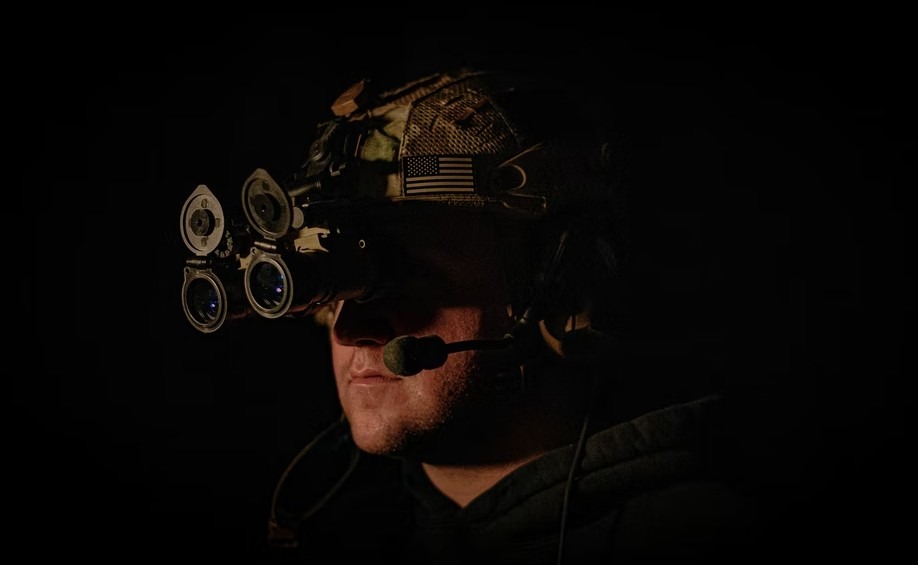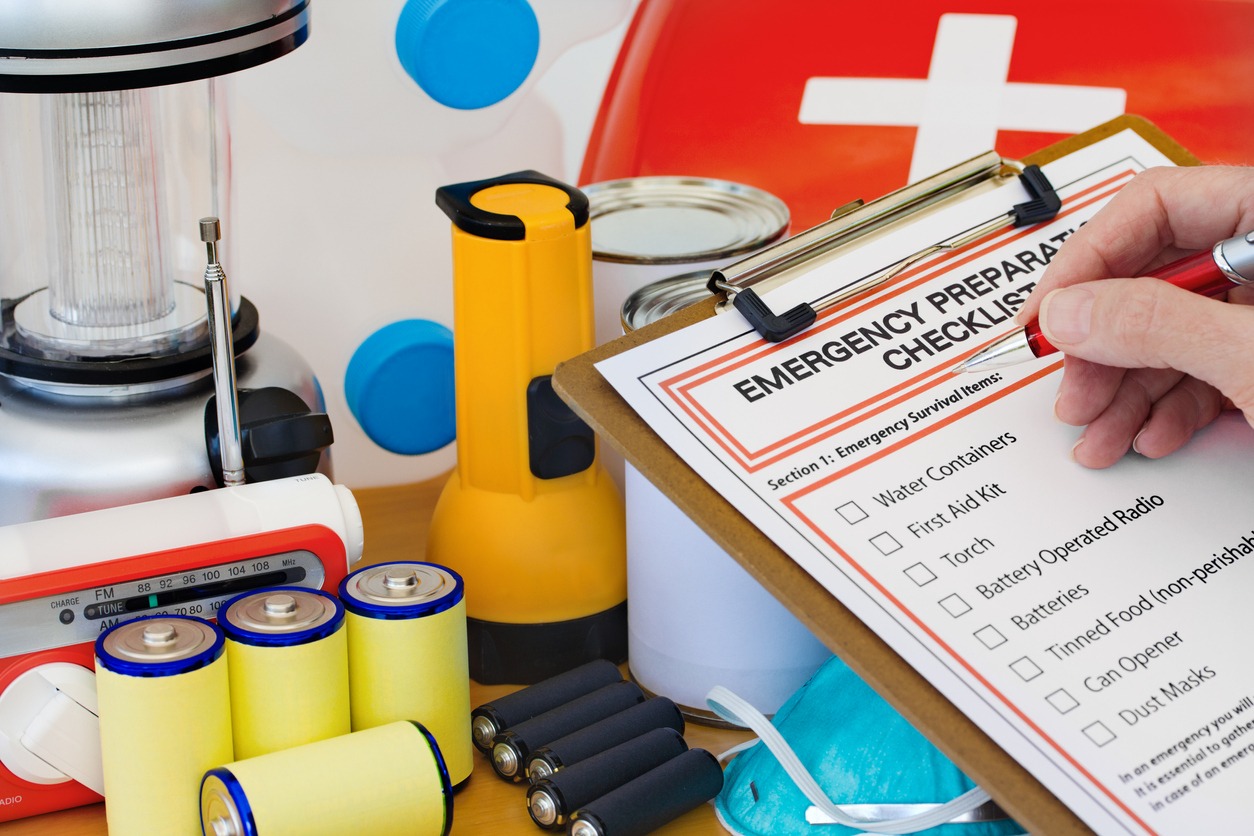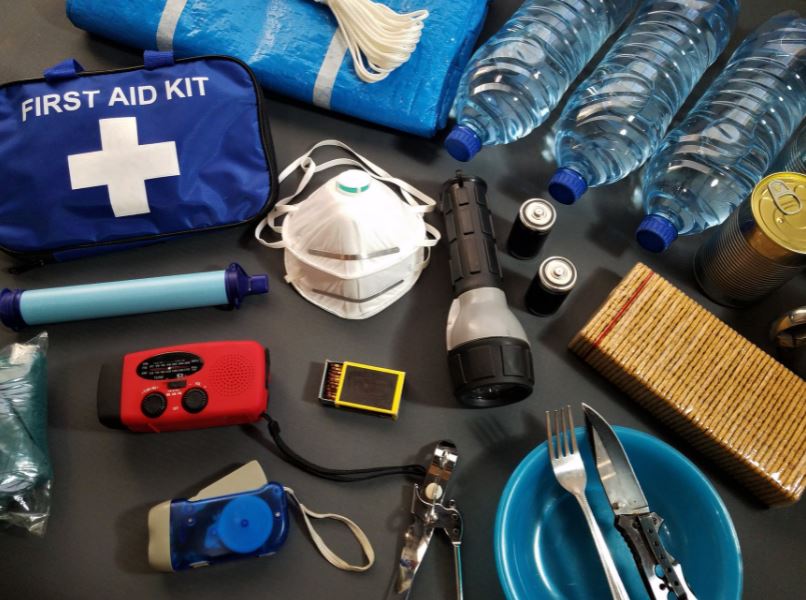What Is Urban Prepping?

Urban prepping focuses on being prepared for emergencies in densely populated cities where space and resources are limited. It's not just about stockpiling supplies; it's about creating a plan that addresses the unique challenges of urban living. This includes dealing with gridlocked streets, high population density, and limited access to natural resources. How do you ensure your safety and well-being in such scenarios? By understanding local risks, optimizing your living space, and engaging with your community, you can develop a comprehensive preparedness strategy. Interested in the essential steps to become an urban prepper? Let's explore further.
Unique Challenges
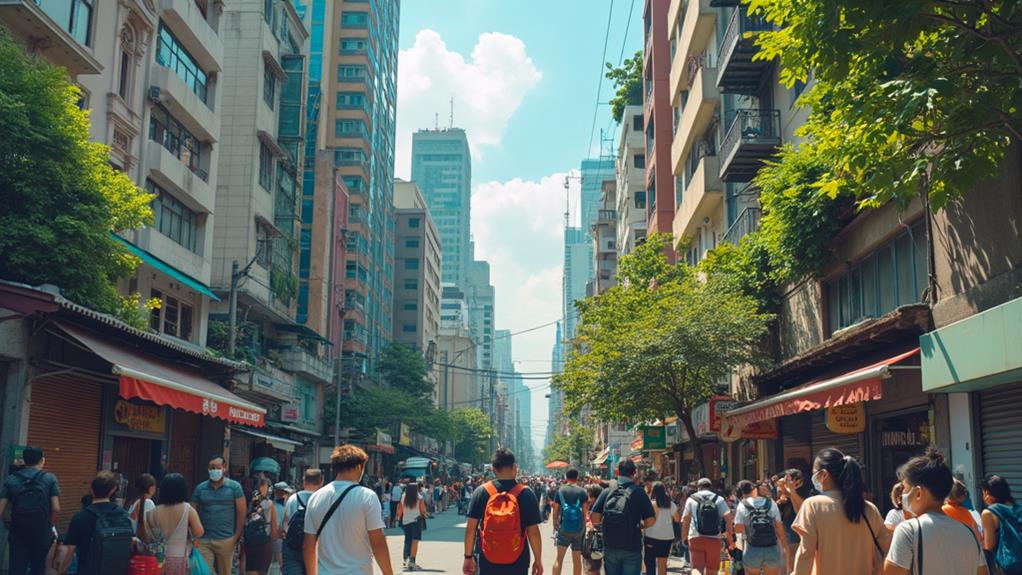
Urban prepping presents unique challenges primarily due to the high population density characteristic of cities. Overcrowding can overwhelm emergency services during disasters, making it vital to have personal emergency supplies ready.
Food storage is fundamental since urban areas have limited natural resources. Relying solely on stores is impractical, especially when supply chains are disrupted. Stockpile non-perishables and optimize limited storage space using under-bed storage and vertical shelving.
Water supply is another concern. Dependence on municipal utilities makes you vulnerable during outages. Prepare by storing enough water and having filtration systems to ensure self-sufficiency.
Transportation issues add complexity. Congested routes and limited evacuation options require well-planned evacuation routes. Familiarize yourself with the quickest paths out of the city and have alternative plans.
Urban prepping demands a thoughtful approach to ensure preparedness for any disaster scenario. Focus on optimizing space and resources to improve self-sufficiency and survival skills.
The Urban Prepper Mindset
To adopt the urban prepper mindset, start by focusing on proactive planning, such as creating personalized emergency kits and learning basic survival skills. Cultivating community connections is equally important; join local prepper groups and participate in skill-sharing workshops to build a supportive network. Collaborating with your neighbors can enhance everyone's readiness and resilience.
Proactive Planning Essentials
In the face of potential urban disasters, cultivating a proactive mindset is essential to ensure you and your loved ones are prepared for any emergency. Begin with a comprehensive urban emergency plan that details crucial supplies, such as food, water, and sanitation items, to sustain you for at least 72 hours. This plan should also include mapped evacuation routes and a clear communication strategy.
Preparation goes beyond gathering supplies; it's also about knowing how to use them. Regularly practice emergency drills and ensure everyone in your household understands survival protocols. This will enhance your overall preparedness and confidence in managing crises.
Stay informed by following reliable news sources and participating in local preparedness discussions. Understanding the risks specific to your urban area allows you to tailor your plan to potential scenarios. Engage in skill-sharing workshops to improve your knowledge and self-reliance.
Cultivating Community Connections
In the realm of urban preparedness, establishing robust community connections is essential for enhancing collective resilience. Engaging with local prepper groups enables the sharing of resources, knowledge, and mutual support during emergencies. Collaborating in this way allows for more efficient resource management and ensures everyone has access to critical supplies when they are most needed.
Participating in community-based skill-sharing workshops offers practical survival techniques and resource management strategies. Learning these skills in a collaborative setting not only boosts individual preparedness but also strengthens the group's overall capabilities.
Implementing a buddy system among neighbors fosters a coordinated response during crises. This system ensures mutual assistance and safety, creating a reliable network of support that is invaluable in times of need.
Building relationships with local organizations, such as food banks and community gardens, further enhances community resilience and self-sufficiency. These partnerships can provide essential resources and support during emergencies, reinforcing the community's ability to withstand challenges.
The urban prepper mindset emphasizes proactive planning and communication. By focusing on community readiness, you can significantly improve your collective response to unexpected events, ensuring a more resilient and prepared urban environment.
Essential Emergency Kit
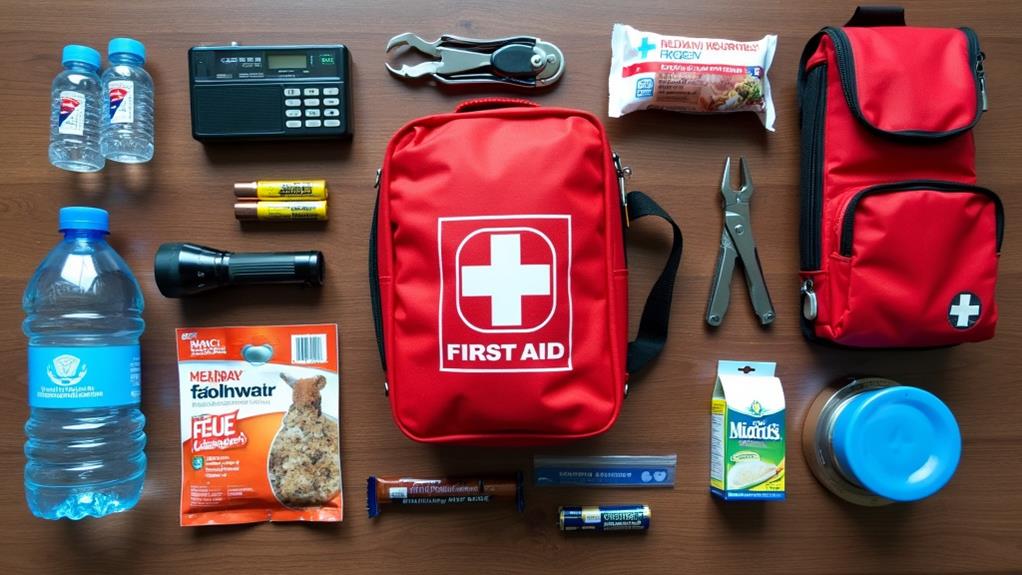
Preparing for unexpected emergencies is a crucial aspect of urban living, and having a well-stocked emergency kit can make all the difference. As an urban prepper, developing essential skills and ensuring your emergency kit is comprehensive are vital. Your kit should sustain you for at least 72 hours, so include non-perishable food items and adequate water storage—at least one gallon per person per day.
A first-aid kit is essential for treating injuries, and personal safety items like pepper spray can enhance your security. In case of a power outage, a battery-operated radio and a flashlight with extra batteries will keep you informed and provide necessary light. Don't forget critical documents; copies of identification and insurance papers can be lifesavers.
Adding a multi-tool and portable chargers helps you tackle various challenges during an emergency. Remember to include prescription medications in your kit. Regularly review and update your supplies to ensure everything is functional and meets your family's needs. By preparing wisely, you'll be better equipped to handle any urban emergency that comes your way.
Creating a Preparedness Plan
Creating a preparedness plan begins with conducting a thorough risk assessment to identify potential urban threats, ensuring your response is appropriate to your specific environment. Map out evacuation routes and establish utility shut-off procedures to enable quick, informed decisions during emergencies. Additionally, develop a family communication strategy so everyone understands how to stay in touch when conventional methods fail.
Risk Assessment Essentials
Evaluating risks is crucial for any effective urban preparedness plan. Conducting a risk assessment involves identifying potential threats specific to an urban environment, such as natural disasters, civil unrest, and infrastructure failures. These threats can significantly disrupt daily life, so it's essential to understand the unique challenges posed by your city's landscape.
Consider factors like population density, reliance on municipal utilities, and limited access to resources. Assess the likelihood and impact of various emergencies, and tailor your preparedness plan accordingly. Mapping evacuation routes is fundamental, as urban traffic congestion can hinder timely evacuations. Ensure you know utility shut-off procedures to prevent further hazards during emergencies.
A robust communication plan is critical. Outline how to contact family members and where to meet during a crisis. Ensure everyone is familiar with this plan. Regularly review and update your preparedness plan based on new information, local hazards, and changes in your living situation. This ongoing process ensures your readiness for unexpected events.
Evacuation Route Mapping
In urban prepping, mapping multiple evacuation routes is crucial for safe and efficient escapes during emergencies. Urban areas often face traffic congestion and blocked paths due to disasters or civil unrest, making a well-designed evacuation plan essential.
- Identify Multiple Routes: Know at least two alternative evacuation routes to your designated safe location. Relying on a single path can cause delays during an emergency.
- Incorporate Public Transportation: Consider buses or subways as part of your evacuation plan. Familiarize yourself with their schedules and routes to expand your options.
- Keep a Physical Map Handy: GPS devices may fail during power outages or infrastructure breakdowns. A physical map marked with hospitals, shelters, and resource centers can be invaluable.
Regularly practice and review your evacuation plan with all family members to ensure everyone knows the routes and meeting points in case of separation. This preparation will help you navigate any emergency more smoothly. Flexibility and readiness are key to effective urban prepping, so keep updating your plan as circumstances change.
Family Communication Strategies
In the event of a disaster, a well-structured family communication plan is essential to ensure everyone remains connected and informed. Begin by designating specific meeting points and check-in times so all family members know where to go and when to report their status. Use group messaging apps or maintain a physical document that lists emergency contacts, including local authorities, hospitals, and neighbors.
Regularly conduct drills to practice the family communication plan. These drills will help everyone understand their roles and how to contact each other under stressful conditions. Incorporate alternative communication methods, such as whistles or predetermined signals, in case technology fails.
It's crucial to periodically review and update your communication plan. Changes in family members, local resources, or protocols may require adjustments to keep your plan effective.
| Elements | Details |
|---|---|
| Meeting Points | Designate specific gathering spots during emergencies |
| Emergency Contacts | List contacts for local authorities, hospitals, and neighbors |
| Regular Drills | Schedule practice sessions for the family communication plan |
| Alternative Communication | Use whistles or signals if electronic devices fail |
| Update Plan | Revise based on new circumstances or family changes |
Staying Informed

To stay ahead during emergencies, it is essential to keep yourself informed through reliable news sources and local alerts. Staying informed ensures you have timely access to critical information that can greatly impact your safety. Subscribing to newsletters and alerts from emergency management agencies keeps you updated on local hazards and preparedness protocols. Here are three key actions to improve your situational awareness:
- Use Emergency Alert Apps: Download and configure emergency alert apps on your smartphone to receive real-time updates during crises. These apps provide immediate notifications about natural disasters, public safety emergencies, and other important events.
- Engage with Community Groups: Participate in online forums or local community groups focused on preparedness. These platforms help you stay informed about community-specific threats and effective preparedness strategies, fostering a culture of readiness.
- Regularly Review Preparedness Plans: Keep your preparedness plans up-to-date by reviewing them regularly based on new information and insights. This ensures your plans remain effective and adaptable to changing circumstances.
Safety and Self-Defense
Staying informed is just one aspect of urban prepping; ensuring your personal safety and self-defense is equally crucial. Urban prepping emphasizes self-defense strategies, especially in environments where civil unrest can elevate crime rates. Understanding personal safety techniques is essential, as streets can become hazardous during protests or riots, complicating evacuation efforts.
To stay secure, include self-defense tools like pepper spray and personal alarms in your emergency kits. These can be lifesavers in crowded or chaotic situations. Additionally, training in self-defense techniques provides you with the skills needed to protect yourself in potentially volatile urban environments.
Building community trust through neighborhood engagement can significantly enhance your safety. Knowing your neighbors helps create a support network during crises, making it easier to find emergency shelter or share resources. A strong community is a valuable asset when civil unrest disrupts normal life.
Community Engagement
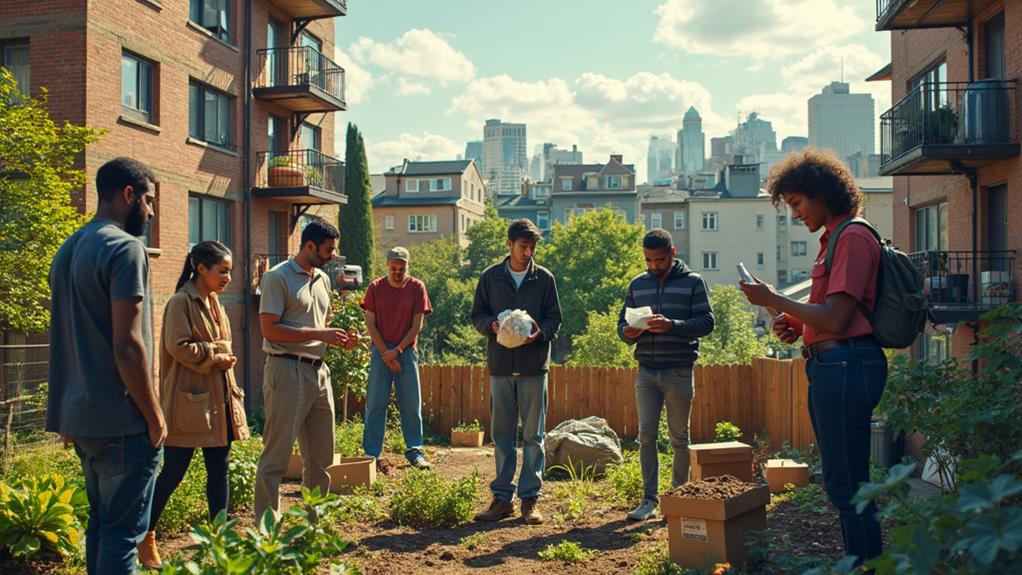
Building strong relationships with your neighbors is essential for effective urban preparedness. Community engagement fosters mutual support, ensuring everyone is better equipped for emergencies. Here's how to get started:
- Organize Preparedness Workshops: Hosting local workshops promotes skill development and knowledge sharing. Sessions can cover topics like first aid, resource management, and emergency drills, enhancing community resilience.
- Form Emergency Response Teams: Establish local emergency response teams to ensure swift and efficient action during crises. Leverage the diverse skills within your community for organized and effective responses.
- Participate in Local Groups: Join local groups or online forums focused on disaster preparedness to exchange ideas, resources, and strategies. Engaging with like-minded individuals is invaluable for staying informed and prepared.

